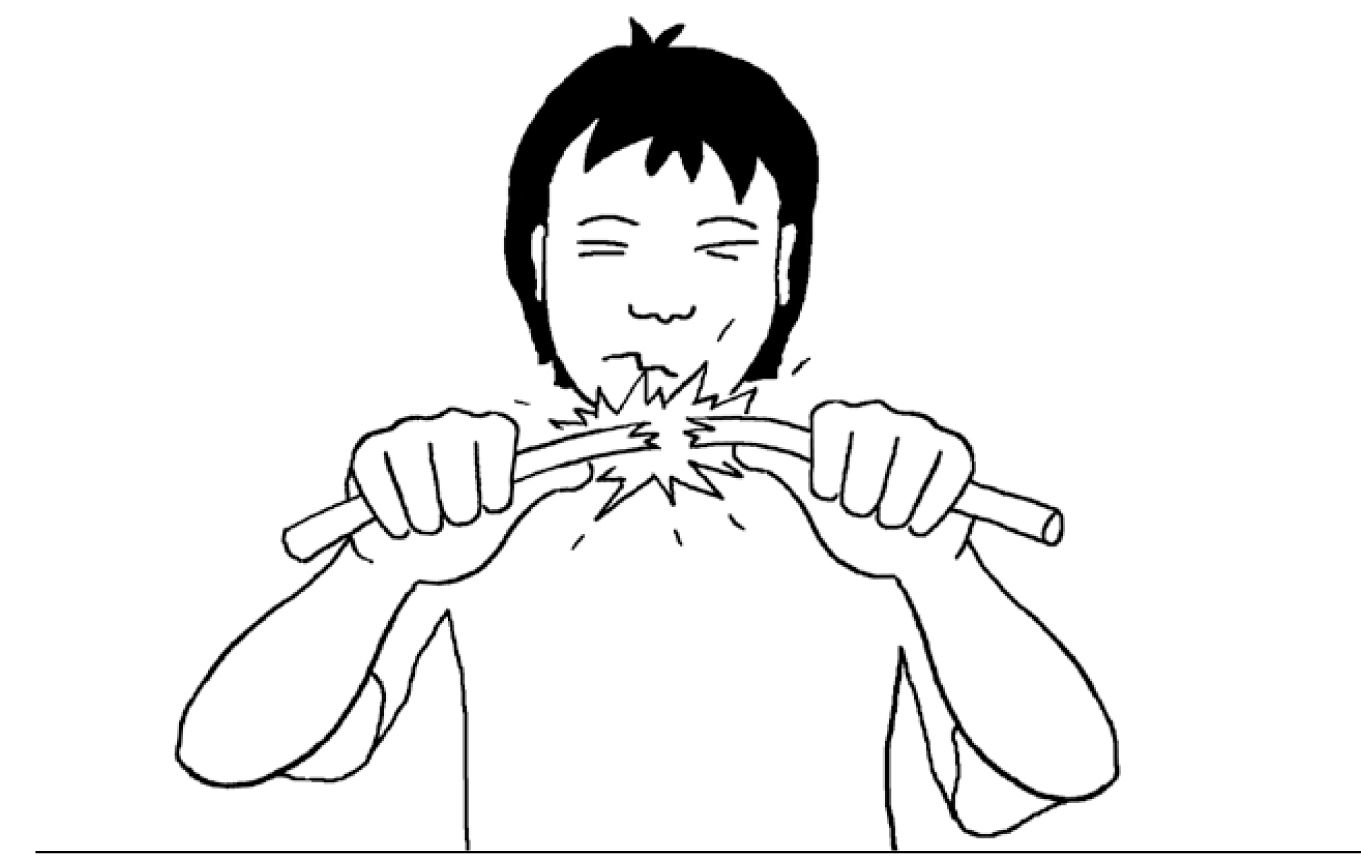Hints:
Source: Schilling, Dianne (1993): Miteinander klarkommen. Toleranz, Respekt und Kooperation trainieren. (Getting along with each other. Tolerance, respect and cooperation training). Mülheim an der Ruhr: Verlag an der Ruhr.
Procedure:
- The students form groups of 6–12 persons. Each student receives a wood stick or a twig. The instructor explains that the sticks symbolize the students themselves with all their strengths, vulnerabilities and feelings which they as individuals have. S/he explains that the pressure and stress which people experience in their lives can lead to a situation where they warp and sometimes even break. This should now be practically demonstrated in that the students break their sticks.
- After breaking their sticks, the instructor asks certain students to demonstrate and to report how much pressure was needed – very little, medium or extreme stress. It will become evident that many were able to break their sticks very easily, whereas others had to try harder.

- The discussion will clarify that people – just as the sticks- can withstand the pressure exerted by life to varying degrees. How much stress a person can withstand depends to a great extent on how effectively s/he can deal with pressure. Even the strongest person can break if the pressure is too great.
- The remaining sticks or twigs are then distributed, together with a paper label. All students write their names on the label and affix it to the sticks, which are then collected and bound in a bundle. The instructor then asks various students to break such a bundle with their bare hands. It is clear that even very strong persons would have great difficulties to accomplish this feat.
- Prompts for the final class reflection and discussion:
- What does this exercise have to do with us, which parallels could be seen?
- What is the difference between personal identity and group identity?
- What are the benefits of working in groups?
- What happens to individual identity if a person becomes a member of a group?
- When and in which areas can a group help a person to cope with life’s difficulties and surmount a challenge; when and in what sense can it not?






